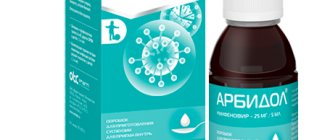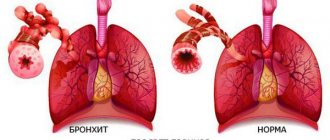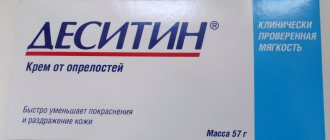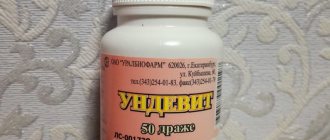Codelac Neo
CODELAC® NEO is a powerful remedy for dry cough in adults and children, a centrally acting antitussive .
Advantages of the drug/molecule
- helps suppress dry cough, selectively affecting the cough center;
- helps reduce the frequency, strength and intensity of cough impulses during dry cough;
- has an antitussive, moderate bronchodilator and anti-inflammatory effect, improves the respiratory function of the lungs;
- begins to act within 30 minutes after the first dose*1,2;
- has a long-lasting antitussive effect after a single dose: up to 6 hours – for liquid forms3
- up to 12 hours – for tablet forms4
- retains antitussive effect with long-term use5;
- has a favorable safety profile: does not depress breathing;
- does not contain addictive components;
- approved for use by children from 2 months of age**;
- Possibility of use in pregnant women from the 2nd trimester***;
- Can be used by people with diabetes - does not contain sucrose or glucose as a sweetener
Advantages of release forms
- 3 forms of release provide the possibility of using the drug in people of different age groups: drops - for babies from 2 months of age;
- syrup – for children from 3 years of age and adults;
- tablets - for persons over 18 years of age.
- The bottle is equipped with a lid with first opening control
- Each bottle is equipped with a two-component polyethylene cap with first opening control, which provides protection against independent use of the drug by children;
- small tablet size, facilitating the process of swallowing the drug;
Indications for use
- dry cough of any origin, with: “colds”;
- flu;
- whooping cough;
- other conditions.
The line of over-the-counter cough medications KODELAK® is specially designed taking into account the stages of cough in acute respiratory diseases:
- at the beginning of the disease, at the stage of dry cough, CODELAC® NEO can be used.
- subsequently, for a wet cough, including a cough with difficult sputum discharge, you can use KODELAK® BRONCHO (for children - KODELAK® BRONCHO with thyme).
- during the recovery period, when there is a residual dry or unproductive cough, KODELAK® NEO can be used to alleviate the condition of patients.
Codelac Neo drops for children: instructions for use
Where can I buy
Registration number : LP-001808
Trade name of the drug : Codelac® Neo
International nonproprietary name: butamirate.
Dosage form : drops for oral administration.
Composition for 20 ml
Active substance: butamirate citrate (in terms of 100% substance) – 100 mg;
Excipients: sorbitol (Neosorb 70/70 B, sorbitol syrup) – 8100 mg, glycerol (glycerol) – 5800 mg, ethanol 95% (ethyl alcohol 95%) – 61 mg, sodium saccharinate – 23 mg, benzoic acid – 23 mg , vanillin – 23 mg, sodium hydroxide solution 30% – 10 mg, purified water up to 20 ml.
Description
The liquid is colorless to colorless with a yellowish tint, transparent or slightly opalescent, with a vanilla odor.
Pharmacotherapeutic group: centrally acting antitussive
ATX code: R05DB13
Pharmacological properties
Pharmacodynamics
Butamirate, the active substance of KODELAK® NEO, is a centrally acting antitussive agent. It is not classified as an opium alkaloid either chemically or pharmacologically. Does not form dependence or addiction.
Suppresses cough, having a direct effect on the cough center. Has a bronchodilator effect (expands the bronchi). Helps make breathing easier by improving spirometry (reduces airway resistance) and blood oxygenation (saturates the blood with oxygen).
Pharmacokinetics
Suction
After oral administration, butamirate is quickly and completely absorbed from the gastrointestinal tract. After taking 150 mg of butamirate, the maximum concentration of the main metabolite (2-phenylbutyric acid) in the blood plasma is reached after approximately 1.5 hours and is 6.4 mcg/ml.
Distribution and metabolism
Hydrolysis of butamirate, initially to 2-phenylbutyric acid and diethylaminoethoxyethanol, begins in the blood. These metabolites also have antitussive activity and, like butamirate, are highly (about 95%) bound to plasma proteins, resulting in their long half-life. 2-phenylbutyric acid is partially metabolized by hydroxylation.
When taking the drug again, no accumulation is observed.
Removal
The half-life of butamirate is 6 hours. Metabolites are excreted mainly by the kidneys. Moreover, 2-phenylbutyric acid is mainly excreted in the form associated with glucuronic acid.
Indications for use
Dry cough of any etiology, including whooping cough; to suppress cough in the preoperative and postoperative period, during surgical interventions and bronchoscopy.
Contraindications
Hypersensitivity to the components of the drug, fructose intolerance, pregnancy (first trimester), breastfeeding period. Children's age up to 2 months.
Carefully
Pregnancy (II and III trimesters).
Due to the presence of ethyl alcohol in the drug, use with caution in patients with a tendency to develop drug dependence, with liver diseases, alcoholism, epilepsy, brain diseases, pregnant women and children.
Use of the drug during pregnancy and breastfeeding
There is no data on the safety of the drug during pregnancy and its passage through the placental barrier. The use of the drug in the first trimester of pregnancy is contraindicated. In the second and third trimesters of pregnancy, the use of the drug is possible taking into account the ratio of benefits to the mother and potential risk to the fetus.
The penetration of the drug into breast milk has not been studied, therefore the use of the drug during breastfeeding is not recommended.
Directions for use and doses
Inside, before meals.
Children aged 2 to 12 months - 10 drops 4 times a day; from 1 year to 3 years - 15 drops 4 times a day; over 3 years old - 25 drops 4 times a day.
Before using the drug in children under 2 years of age, you should consult your doctor.
Drops for oral administration 5 mg/ml (1 ml contains 22 drops).
If the cough persists more than 5 days after starting treatment, you should consult a doctor.
Side effect
Classification of the frequency of adverse reactions: very often (≥1/10); often (≥1/100, <1/10); uncommon (≥1/1000, <1/100); rare (≥1/10000, <1/1000); very rare (<1/10000), including isolated reports.
From the nervous system:
Rarely: drowsiness, dizziness, which goes away when the drug is stopped or the dose is reduced.
From the gastrointestinal tract:
Rarely: nausea, diarrhea.
For the skin and subcutaneous tissues:
Rarely: urticaria, possible development of allergic reactions.
Overdose
Symptoms: nausea, vomiting, drowsiness, diarrhea, dizziness, decreased blood pressure, impaired coordination of movements.
Treatment: activated carbon, saline laxatives, symptomatic therapy (according to indications).
Interaction with other drugs
No drug interactions have been reported for butamirate. During treatment with the drug, it is not recommended to drink alcoholic beverages, as well as drugs that depress the central nervous system (hypnotics, antipsychotics, tranquilizers and other drugs).
Due to the fact that butamirate suppresses the cough reflex, the simultaneous use of expectorants should be avoided to avoid the accumulation of sputum in the respiratory tract with the risk of developing bronchospasm and respiratory tract infection.
special instructions
The drops contain sodium saccharinate and sorbitol as sweeteners, so it can be used in patients with diabetes.
Due to the presence of ethyl alcohol in the drug, there is a danger when using the drug in patients with a tendency to develop drug dependence, with liver diseases, alcoholism, epilepsy, brain diseases, pregnant women and children.
Impact on the ability to drive a car and operate machinery
It is recommended to refrain from driving vehicles and engaging in other potentially hazardous activities that require increased concentration and speed of psychomotor reactions, as the drug can cause dizziness and drowsiness.
Release form
Drops for oral administration 5 mg/ml.
20 ml in dropper bottles made of dark (amber) glass. One bottle along with instructions for use in a cardboard box.
Storage conditions
At a temperature not higher than 25ºС. Keep out of the reach of children.
Best before date
2 years.
Do not use after the expiration date.
Conditions for dispensing from pharmacies
Over the counter.
Marketing authorization holder/organization receiving consumer complaints:
PJSC OTCPharm, Russia, 123317, Moscow, st. Testovskaya, 10
Tel.
Fax
www.otcpharm.ru
, 305022, Russia, Kursk, st. 2nd Aggregatnaya, 1a/18, tel./fax, www.pharmstd.ru
Buy Codelac Neo drops 5mg/ml 20ml in pharmacies
Instructions for use Codelac Neo Dosage forms drops for oral administration 5mg/ml 20ml
Synonyms Omnitus Sinecode Group Non-narcotic antitussives International nonproprietary name Butamirate Composition Active substance: butamirate citrate (in terms of 100% substance) - 100 mg. Manufacturers Pharmstandard-Leksredstva OJSC (Russia) Pharmacological action Pharmacodynamics. A non-opioid antitussive agent that has a direct effect on the cough center. It has an antitussive, expectorant, moderate bronchodilator and anti-inflammatory effect, improves spirometry (reduces airway resistance) and blood oxygenation. Pharmacokinetics. Suction. After oral administration, the drug is quickly and completely absorbed from the gastrointestinal tract. After taking 150 mg of butamirate, the maximum concentration of the main metabolite (2-phenylbutyric acid) in the blood plasma is reached after approximately 1.5 hours and is 6.4 mcg/ml. Distribution and metabolism. Hydrolysis of butamirate initially to 2-phenylbutyric acid and diethylaminoethoxy-ethanol begins in the blood. These metabolites also have antitussive activity, and, like butamirate, are 95% bound to plasma proteins. This is due to the long half-life of the drug from plasma. 2-phenylbutyric acid is partially metabolized by hydroxylation. When taking the drug again, no accumulation is observed. Excretion. The half-life is 6 hours. All three metabolites are excreted primarily in the urine. Moreover, 2-phenylbutyric acid is mainly excreted in the form associated with glucuronic acid. Side effects From the central nervous system: less than 1% of cases - dizziness, which goes away when the drug is stopped or the dose is reduced. From the digestive system: nausea, diarrhea. Allergic reactions: skin rash, itching. Other: exanthema. Indications for use : Dry cough of any etiology, cough during the preoperative and postoperative period, cough during surgery and bronchoscopy, whooping cough. Contraindications Hypersensitivity to the components of the drug, pregnancy (first trimester), breastfeeding period. Children's age up to 2 months. Use of the drug during pregnancy and breastfeeding. Experimental studies did not reveal any undesirable effects of the drug on the fetus. Clinical studies of the safety of the drug have not been conducted, and therefore the drug should not be used in the first trimester of pregnancy. The penetration of the drug into breast milk has not been studied, so administration of the drug during breastfeeding is not recommended. Directions for use and dosage : Orally, before meals. Children aged 2 to 12 months - 10 drops 4 times a day; from 1 year to 3 years - 15 drops 4 times a day; over 3 years old - 25 drops 4 times a day. Overdose Symptoms: nausea, vomiting, drowsiness, diarrhea, dizziness, decreased blood pressure, loss of balance. Treatment: activated carbon, saline laxatives, symptomatic therapy (according to indications). Interaction Not noted. Special instructions The drug can be used by patients with diabetes mellitus, since sucrose or glucose is not used as a sweetener. Influence on the ability to drive a car and operate machinery. If dizziness develops while taking the drug, it is recommended to refrain from driving vehicles and performing work that requires increased concentration and speed of psychomotor reactions (due to the possible development of dizziness). Storage conditions Store out of the reach of children at a temperature not exceeding 25 C.








